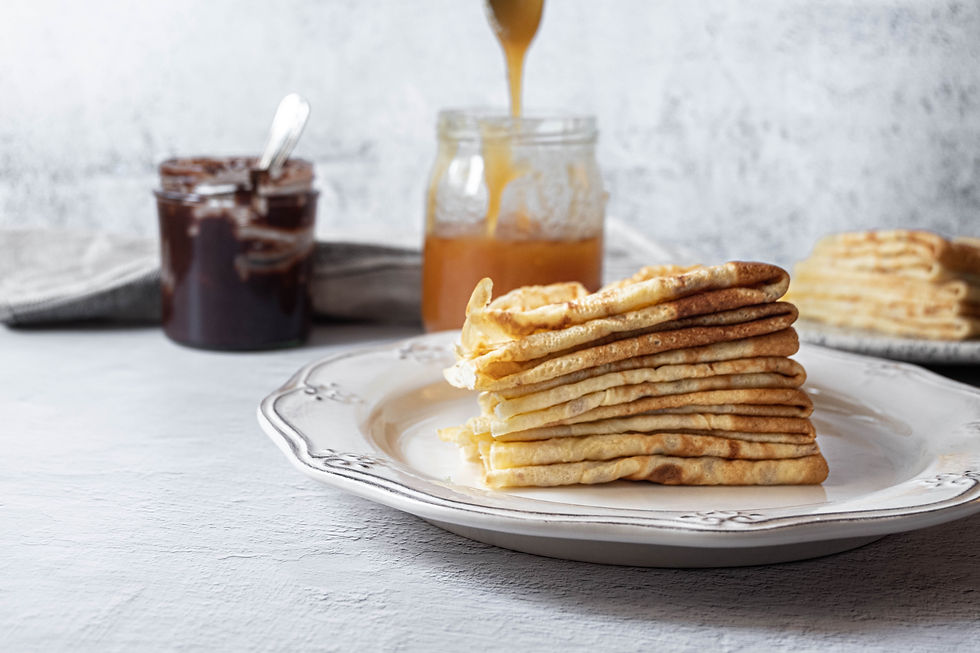Swiss Meringue Buttercream
- Julia

- Apr 9, 2020
- 4 min read
Updated: Feb 4, 2021
A Swiss Meringue Buttercream You Wish Your Pillows Were Made Out Of
Swiss meringue buttercream is something you have to know how to do. In the baking world, not knowing how to whip up a smooth batch of it is like not knowing how to boil water. Aside from the fact that it's silky smooth and flawlessly conquered by butter, Swiss meringue buttercream is extremely useful. You can use it to frost and fill cakes and cupcakes, to top pies, to fill cookies and macarons, the list is endless. Even better, if you learn how to make Swiss meringue buttercream, you will, essentially, be able to make Swiss meringue, obviously. So, that's a two-in-one. Roll up your sleeves, and let's get to it.

Cali, Colombia. Fall of 2009.
Being from South America means you grew up with a strong influence from the USA, whether you noticed it or not. Large fridges and big supermarket runs are one example. In my case, this influence was more pronounced because I attended an American school and had and still have family living in the USA. Naturally, the majority of my summer vacations were spent visiting relatives in Florida, drowning in my mom's Target shopping cart, hopping from William's Sonoma to Anthropologie to Crate and Barrel to Pottery Barn, stocking up on kitchen tools (including many despicable measuring cups), table sets, mesmerizing bowls, unnecessary salt and pepper grinders, but most importantly, cookbooks. American cookbooks. My mom has an impressive collection of Martha Stewart cookbooks, including the one on cupcakes, which is where I first found the recipe for Swiss meringue buttercream.
I was 12 or 13 years old, and I was set on making Martha's Swiss meringue buttercream to lavishly decorate some cupcakes I had made the day before. I quickly found myself whisking egg whites and sugar over a bain-marie, standing over the stove on a kitchen stool, unsupervised. Yes, unsupervised. Where were you, mom? Now that I think back, WTH? Anyways, I ended up producing a silky smooth and shiny buttercream, which I then dyed in pink and blue and swirled on top of my cupcakes with a piping bag fitted with a star tip. They were beautiful.
My recipe below initially started with Martha Stewart's. Still, I tweaked it throughout the years to adjust to my level of sugar tolerance. In the end, I omitted the vanilla extract because I always forget to add it anyway.
Ingredients

5 egg whites from large eggs (or 150 g of egg whites)
225 g sugar
1/4 tsp of salt
450 g butter at room temperature
Method
STEP 1. In the bowl of your stand mixer, or a heat proof bowl, pour in egg whites and sugar. Set the bowl on top of a pot of simmering water. The water should not touch the bowl, this is very important. Whisk without stopping until you run your fingers through the mixture and cannot feel the grains of sugar. The egg whites should now look light and frothy.

STEP 2. Transfer egg whites and sugar mixture to a stand mixer fitted with the whisk attachment and whisk starting at low speed and making your way up to medium-high. Whisk until the mixture is glossy and medium/stiff peaks have formed. You can do this with a hand mixer.
At this point, you have successfully made Swiss Meringue. If that was your goal, the recipe ends here.
STEP 3. Start adding the butter (at room temperature) a couple of tablespoons at the time. to help with this process, I cut up my butter in cubes. Make sure each batch of butter is completely incorporated before you add the next. When you have added about half of the butter, your meringue will start looking like ricotta cheese, and you will think you messed it up. Good news, you did not. Keep adding butter and keep mixing. Trust the process. Once all the butter is incorporated you will end up with a smooth and shiny buttercream.
STEP 4. Switch to the paddle attachment and beat the buttercream on medium-low speed to pop some of the air bubbles and smooth it out even further. If you are using a hand mixer, just switch to a spatula and beat it aggressively by hand. Transfer to a bowl, and use.
Notes on the Recipe:
Making meringue by hand is a challenge I have never been a part of. Technically, it is doable, but it will be a long and tiring journey, and you might not get perfect results. But, if you decide to go this route, more power to you!
Like the Classic Vanilla Cake recipe, this buttercream is a white canvas. You can flavor it with almost anything you can think of and dye it any color you want. Or, you can use it as is.
When cooking the egg whites and sugar mixture, make sure your bain-marie water is just simmering and not boiling. We do not want to scramble the whites, we just want to cook them enough to dissolve the sugar and make them eatable without having to bake them.






















Комментарии